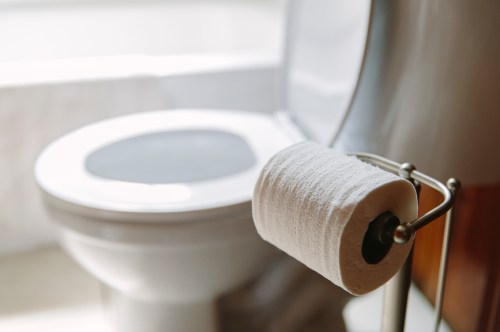Your Pelvic Floor Can Be a Secret Weapon Against Constipation—Here’s Why
When you're experiencing constipation, it can be really frustrating and uncomfortable. Try these tips from a pelvic floor therapist.

Constipation can be physically uncomfortable, but it can also be downright frustrating. Whether factors like dietary habits, dehydration, or stress trigger your constipation, it can be tempting to fight it by forcing a bowel movement. Straining, however, isn’t a great idea. It’s not super effective, and it can increase your risk of anal fissures and prolapse. Instead, a key to relieving constipation might actually involve relaxing your pelvic floor.
Experts in This Article
doctor of physical therapy, owner of Femina Physical Therapy, and author of Sex Without Pain
For the uninitiated, your pelvic floor is a hammock-like group of muscles resting in your pelvis that support your organs and control how and when you go to the restroom, according to the Mayo Clinic. Your pelvic floor muscles need to relax and release to expel poop, says Heather Jeffcoat, DPT, a pelvic floor therapist and Femina PT. Relaxation allows the anal sphincter muscle to open, so you’re able to have a bowel movement.
Yes, straining and squeezing the muscles you use for the bathroom (like the sphincter, lower diaphragm, and core) can sometimes help get things moving, but it can also make you tighten your muscles, which in turn makes it harder to pass stool, Dr. Jeffcoat says. So, to help you relax your pelvic floor, Dr. Jeffcoat offers the following suggestions:
1. Practice deep breathing before, during, and after
Deep breathing is one of the primary exercises Dr. Jeffcoat recommends if you’re sitting on the toilet with no luck. To start: Inhale slowly and feel your rib cage expand, then gently exhale, Dr. Jeffcoat says. “Repeat this a few times; with each breath, think about inhaling all the way down into your pelvic floor. Both your diaphragm and your pelvic floor should drop and lengthen as you inhale.”
Dr. Jeffcoat recommends you start doing this before you’re in the bathroom; stage fright is a real thing. Continue breathing when you’re in the bathroom, but she adds that if you don’t go within 5 minutes, it’s a good idea to try again later.
2. Try not to sit on the toilet for too long
It can be upsetting when time passes, and you’re just not going. Instead of sitting there, grab some water, eat fiber-rich food, and try gentle movement like walking before attempting to go again. If you’re dealing with frequent consipation, Dr. Jeffocat recommends meeting with a nutritionist or dietician to find a diet that alleviates your symptoms.
4. Consider a toilet squat stool
Using a toilet squat stool could be another way to get your pelvic floor muscles in a potentially relaxed position. A 2019 study published in the Journal of Clinical Gastroenterology suggests that toilet squat stools, or defecation posture modification devices, helped those who had previously experienced straining and slow bowel movements. If you don’t have one of those, an upsidedown trash can (that’s strong) can work as a substitute. This works because having your knees above your hips increases the anorectal angle—which allows the bowel movement to exit with less resistance, Dr. Jeffcoat adds.
4. Don’t do too much extra movement
Even though some folks might advise wiggling your hips, Dr. Jeffcoat recommends that you don’t do too much choreography on the toilet. This is because it can cause your pelvic floor and other colorectal muscles to tense, which creates a “kink in the hose,” or so to speak.
5. Optimize your diet for more regular poops
Some of the most essential constipation-relieving techniques happen outside of the bathroom. Things like water, fiber, walking, and deep breathing can prevent and improve intestinal traffic jams pretty well.
6. Know when to seek support
Dr. Jeffcoat stresses the importance of a relaxed bathroom experience. Something to pay attention to is your stool consistency. The Bristol Stool Scale is a great way to assess the texture of your stool and understand the state of your constipation level. For instance, levels 1 and 2, according to the Mayo Clinic, point to constipation and might need the attention of a doctor, dietary change, or visit to a dietitian. Constipation happens to the best of us, but it’s okay to seek support if you’re experiencing persistent symptoms.
Oh hi! You look like someone who loves free workouts, discounts for cutting-edge wellness brands, and exclusive Well+Good content. Sign up for Well+, our online community of wellness insiders, and unlock your rewards instantly.
Sign Up for Our Daily Newsletter
Get all the latest in wellness, trends, food, fitness, beauty, and more delivered right to your inbox.
Got it, you've been added to our email list.










